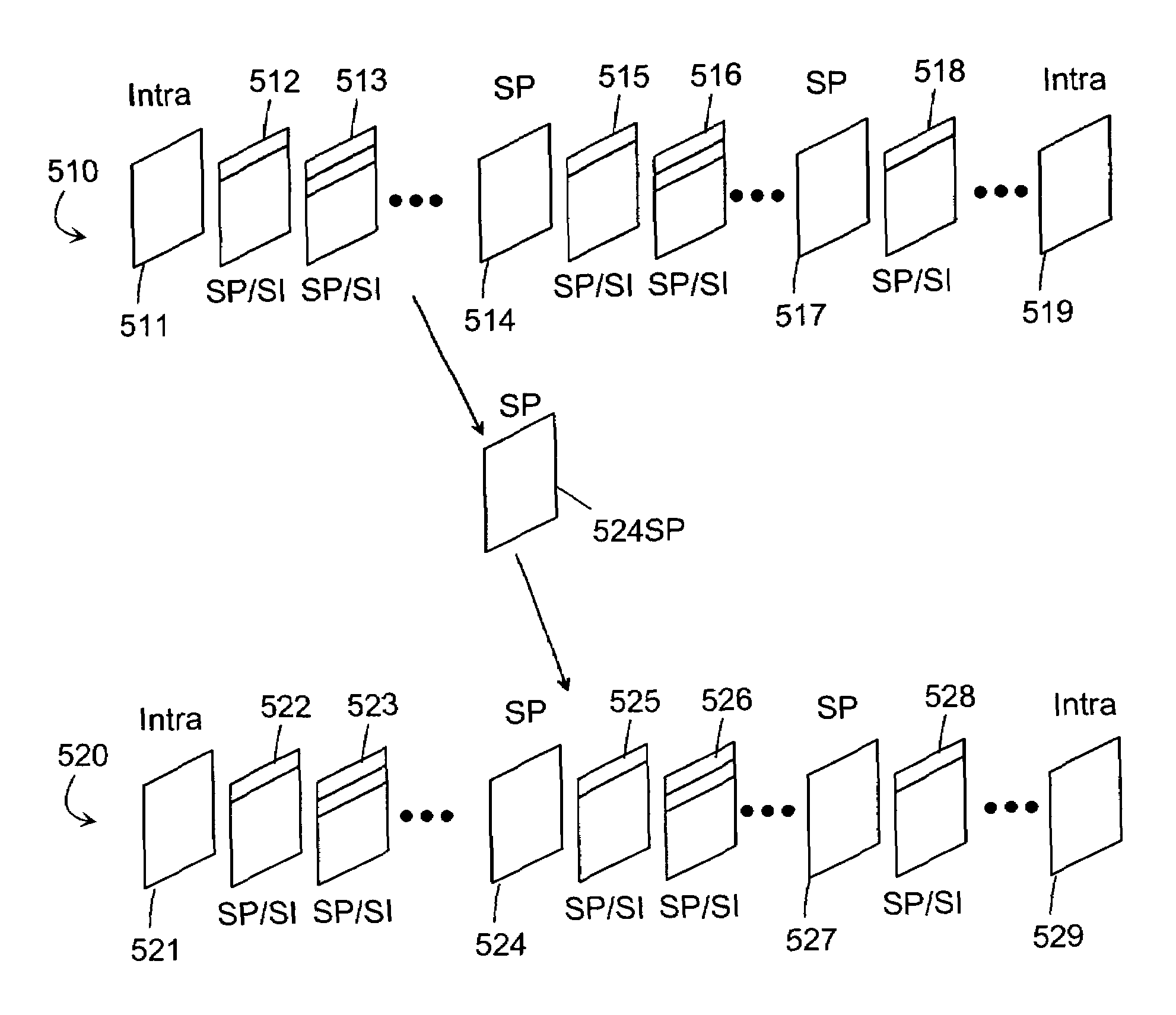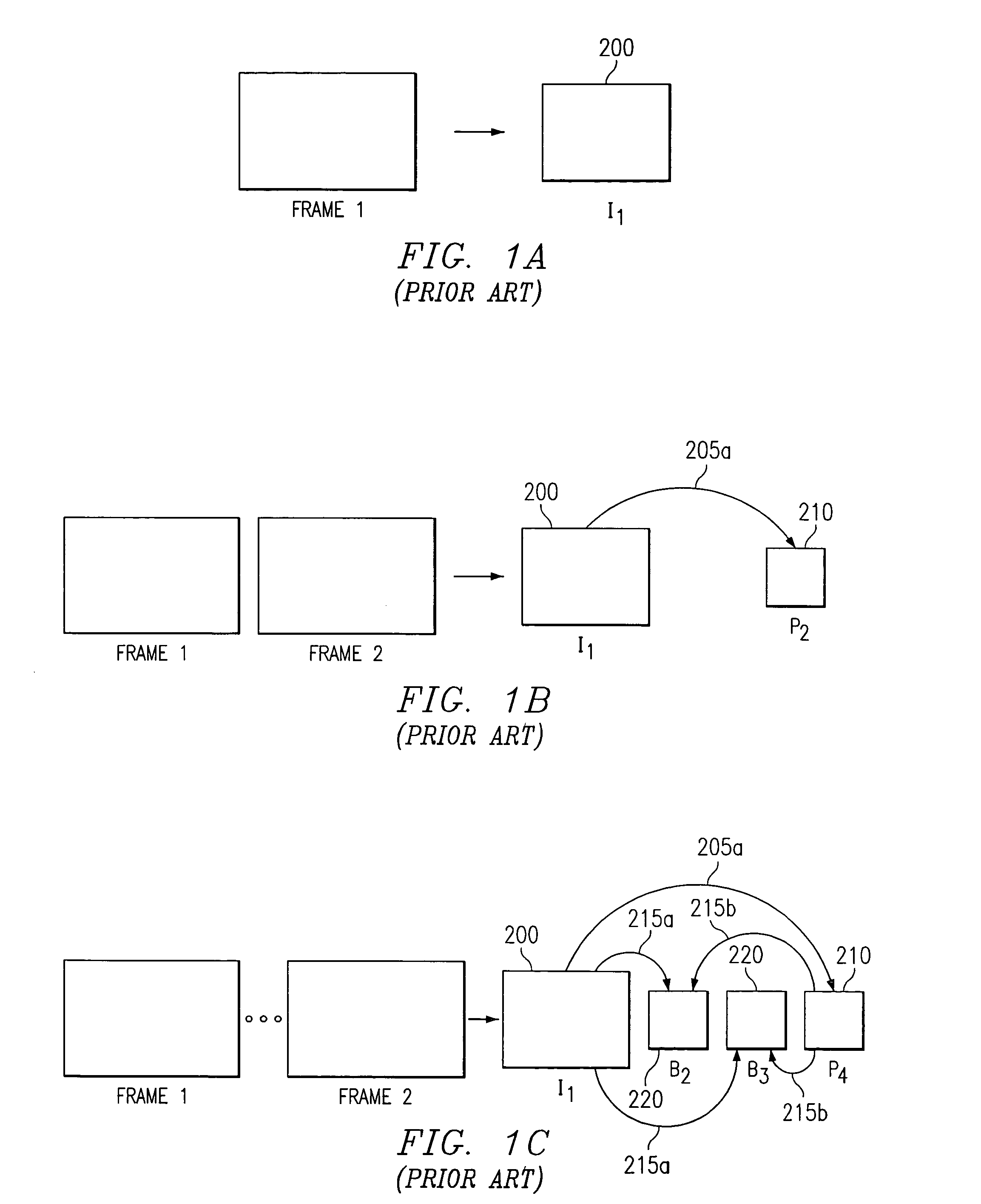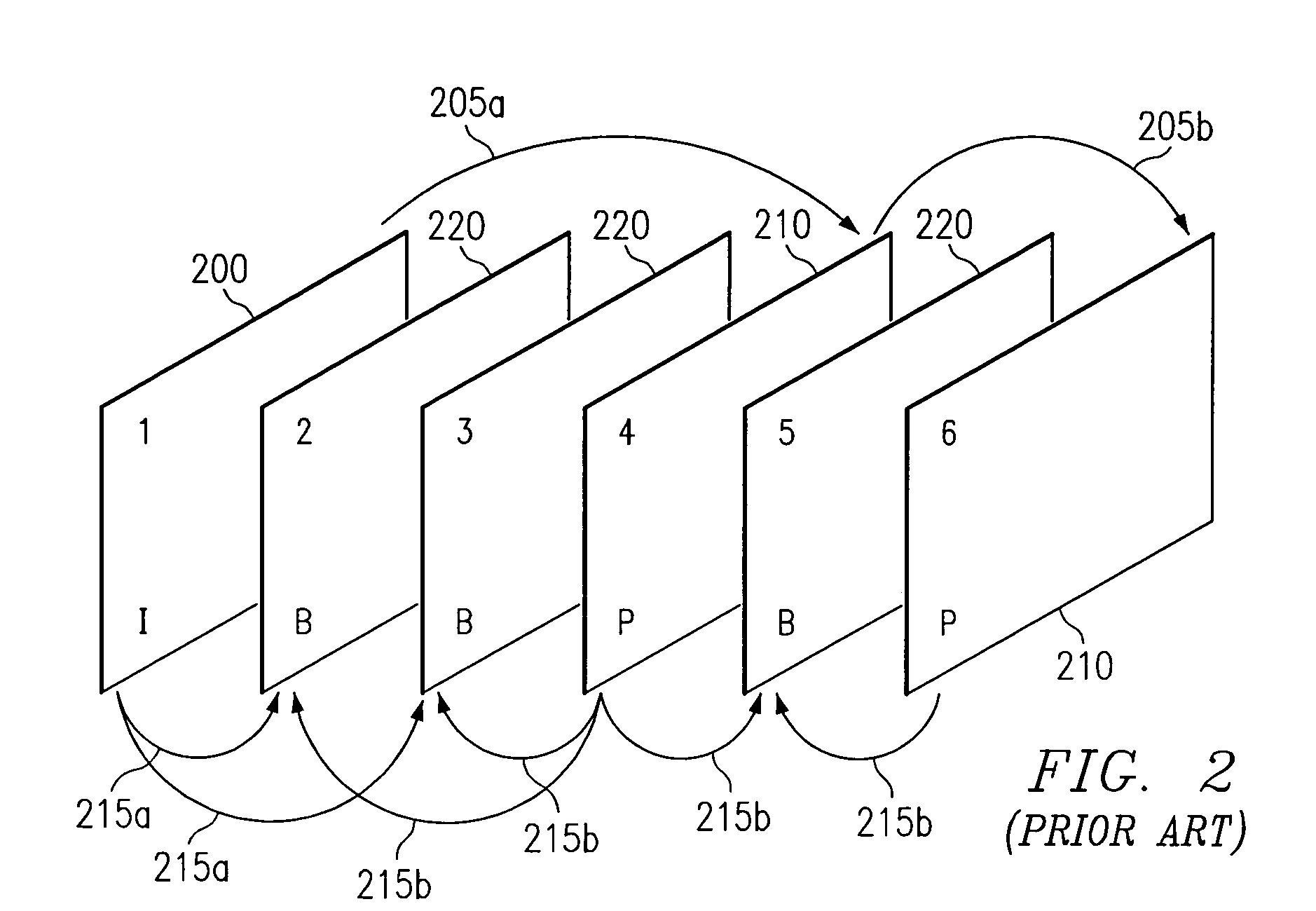Transmission of video information
a technology of video information and transmission method, applied in the field of video information transmission method, can solve the problems of inability to apply the above solution, inability to decode b-frames and/or p-frames, and inability to decode p-frames without, so as to improve error resiliency, improve video quality, and spread bandwidth more evenly
- Summary
- Abstract
- Description
- Claims
- Application Information
AI Technical Summary
Benefits of technology
Problems solved by technology
Method used
Image
Examples
Embodiment Construction
[0071]In the following, the method according to an example embodiment of the invention will be described in more detail with reference to the system 1 of FIG. 8 and frames of FIGS. 3a and 3b. In the encoder 3 one or more bit streams are formed from a video signal from of a video source 2. The video signal can be any digital video signal comprising multiple images, i.e. an image sequence. If multiple bit streams are formed, each of them is encoded from the same video signal using at least partly different encoding parameters. For example, the bit rate can be altered by selecting the encoding parameters differently, and in this way bit streams with different bit rates can be formed. The encoding parameters can be, for example, frame rate, quantisation parameter, spatial resolution, or another factor affecting the image size. The encoder 3 also inserts at least one Intra frame 10 to each bit stream. Typically, at least the first frame of each bit stream is preferably an Intra frame. Th...
PUM
 Login to View More
Login to View More Abstract
Description
Claims
Application Information
 Login to View More
Login to View More - R&D
- Intellectual Property
- Life Sciences
- Materials
- Tech Scout
- Unparalleled Data Quality
- Higher Quality Content
- 60% Fewer Hallucinations
Browse by: Latest US Patents, China's latest patents, Technical Efficacy Thesaurus, Application Domain, Technology Topic, Popular Technical Reports.
© 2025 PatSnap. All rights reserved.Legal|Privacy policy|Modern Slavery Act Transparency Statement|Sitemap|About US| Contact US: help@patsnap.com



